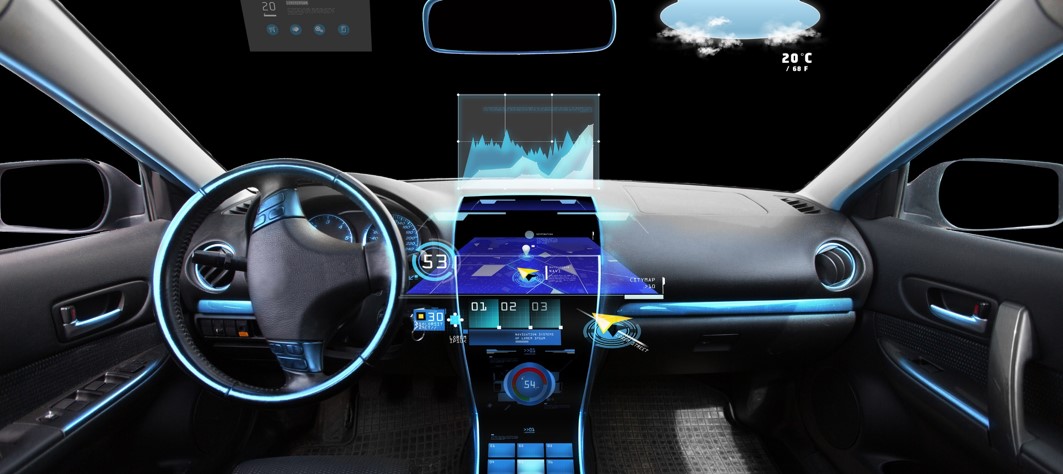Previously the domain of fairytales and fantasies, the magic of the Internet of Things (IoT) lies in its unprecedented ability to bring the internet and its intelligence to the devices we use every day. While these devices will be talking to the internet, they’ll also be talking to you. They will give you insights about machines in your business and electronics in your home that will revolutionize the way the world operates for generations to come.
Think about your own house, where IoT brings previously inanimate household objects to life. while you are driving home from work, your car can communicate with your thermostat, your smart fridge and your smart lights. The thermostat will start pumping heat, the fridge will alert if you are low on milk and the lights will turn on to welcome you back.
Connected devices in an industrial environment will enable equipment pieces along an entire production line to communicate with each other, in real time, from the refining process to the packaging of products. Think small sensors on each machine in a factory that deliver information to your phone about performance and production estimates. Imagine that these sensors can predict maintenance or failure based on signals like temperature, moisture or even sound. VocalZoom, for example, developed a high- quality optical microphone that accurately determines the health of a machine just by listening to the sound of its vibrations (see page 20).
Think granular visibility: making the invisible, visible. Think a company like BT9, whose supply chain tracking platform offers a solution for in- depth monitoring of perishable goods transport. It is companies like these that give us the ability to track a customer’s order from the moment it is placed to the second it arrives. Imagine then being able to leverage that connectivity to establish a relationship with each individual customer. IoT essentially enables producers to have products that talk back to them, even after they have been purchased. It lets them meet each individual need by tracking and measuring a product’s usage and then offering replenishments.
Not only will smart containers by startups such as Silo increase the product life of your favorite snack, but it will also notify you when you are running low via your phone. Similarly, the sensor at the bottom of your milk bottle won’t just let you know that it’s time for a refill. It will enable the milk producer to accurately predict your demand and, better yet, pinpoint the exact location of that demand.
This ecosystem of interconnected devices gives government the ability to transform cities by bridging the gap between current infrastructure and leading technology. Smart sensors could control traffic lights in real-time to prevent jams, or smart parking solutions could create an ongoing map of available spaces. Smart city applications like mCity by mPrest will create new opportunities for municipalities to optimize resource consumption, improve decision-making and planning, and improve overall quality of life and services.
The true magic of IoT, however, lies in the ability to contextualize the massive amount of data millions of interconnected devices will provide. In this context, Israel has rapidly emerged as the engine that drives global IoT expansion because of the country’s insights and experience in data collection, processing and analytics. While the rapid development of IoT has already begun, in our view, these are the top trends that will shape the space going forward.
1. Artificial Intelligence (AI)
Without AI, the incredible applications of IoT won’t be possible. Without it how will your fridge know you’re running low on milk? Or predict the production output of a particular machine in your warehouse. The intrinsic value of artificial intelligence as well as machine learning — which is an application of AI that provides systems the ability to automatically learn and improve from experience — lies in its unique ability to extract insights and identify patterns in the data that smart sensors and devices throughout your home and factories generate.
Since the game-changing aspects of IoT heavily rely on unlocking key insights from the treasure trove of data on the machines and devices forming the IoT ecosystem, companies are fast incorporating artificial intelligence into their IoT applications. TechSee, for example, combines AI to enable enterprises to deliver support for smart-home devices. Customers can install, activate and troubleshoot IoT device issues with interactive and visual assistance, with either a virtual technician or a human expert.
2. Shifting to the Edge
There’s no IoT without AI on the edge, in real time. As a result, IoT will move away from the “cloud” and onto the “edge.” In today’s marketplace, devices and pieces of equipment simply must have actionable insights right there and then. Thanks to companies like Hailo, we will soon live in a world where intelligent devices are empowered with the performance of a datacenter class computer, while operating in real-time at reduced power consumption, size and cost. Latency or network delays could have drastic impacts and cause numerous performance and safety issues. If a vital piece of equipment along a production line is not in complete synchronization with the rest of the plant, the key benefit of performance optimization brought about by IoT is completely eradicated. Thus, while IoT is going to increase the amount of data being stored and circulated, devices in the ecosystem will also require instant response times — regardless of whether they are in the realm of network detection.
3. Autonomous Vehicles
Self-driving cars essentially use the connectivity of IoT devices to collect sensory data, which in turn enables them to safely operate and analyze that data in real time, with zero latency. It is through IoT that a driverless car is able to garner crucial information about its surroundings including weather, traffic and obstacles — essentially providing the car with 360-degree view of the world. Just as we humans make decisions using our senses, technologies, like that of VAYAVISION’s, will enable an autonomous vehicle to make crucial decisions by providing the car with a complete environmental model of the driving landscape. Autonomous vehicles will use sensors like cameras, infrared and radar to detect and classify other objects, identify lanes and traffic signs, and analyze the space around the car. Not only will IoT be useful in the context of collecting sensory data, but it will also exist inside the car itself. IoT will enable the detection of human behavior from an unconscious driver to a forgotten baby in the back seat. It will complement entertainment systems as well as strengthen vehicle security.
4. Security
As the number of connected devices rapidly increases, so will the allure for cyber criminals. By 2020, more than 25% of identified enterprise attacks could be IoT-related, and corporations will need to leverage IoT security as a mechanism for improving operations as well as customer experience. IoT devices gather information about us, our corporations, and the consumers with whom we interact. The cost of a breach is simply unquantifiable. It leaves the supply chain vulnerable to foul play and provides a company’s competitors insights into their operations. It also contributes to the collapse of trust between corporation and consumer. Just imagine the implications of ATM security breach. ThetaRay’s advanced analytics pinpoint suspicious events by discovering anomalies that are hiding in data, enabling faster reaction to attacks. ThetaRay’s analytics can be implemented on both legacy and next-generation ATM platforms.
5. Healthcare
Equipping paramedics with smart devices that can, for example, confirm a blockage in blood flow assists in faster and more accurate analysis of patients — and ultimately enables health professionals to make better decisions. Across the industry, devices that track heart rate, perspiration, body temperature and levels of sugar are being developed. The ultimate goal? To create indicators that can predict and show health risks within the body, as they occur. Such devices would also assist in real-time monitoring, which can save lives in the event of a heart attack or stroke. They can also transmit comprehensive amounts of bodily data to doctors for remote medical assistance and advice. TytoCare, for example, created a device that lets patients do self-examinations and conduct their own tests. The results are then forwarded to a health professional in real-time, thereby reducing the need for symptom-based guesswork when making a remote diagnosis.
6. Industrial IoT
The potential of Industrial IoT (IIoT) is simply enormous. Insights that result from the boundless amount of collected data promises to reform the practices of the industrial world. Crucially, the economic benefits brought about by the kind of granular observations IoT provides has resulted in fast adoption amongst leading industry giants. Predictive maintenance and advanced performance analytics continue to act as a key driving force behind this particular trend, ultimately fueled by the potential to enable a level of efficiency and reliability previously unknown to man.
Cybersecurity breaches are a particular threat to IIoT. CyberX is the industrial cybersecurity platform providing real-time security and visibility into the network of interconnected devices, thus giving companies the ability to detect threats and tampering attempts in real time.
About the Authors
This post was written by Michael Ben-Nun (Venture Partner) and Saul Levin (Investment Analyst) at OurCrowd.
Download OurCrowd’s full Q4 Corporate Innovation Report here.


![Growing Innovation with OurCrowd’s GreenTech Portfolio [Infographic]](https://blog.ourcrowd.net/wp-content/uploads/2016/09/GreenTech-header-blog-1.jpg)





